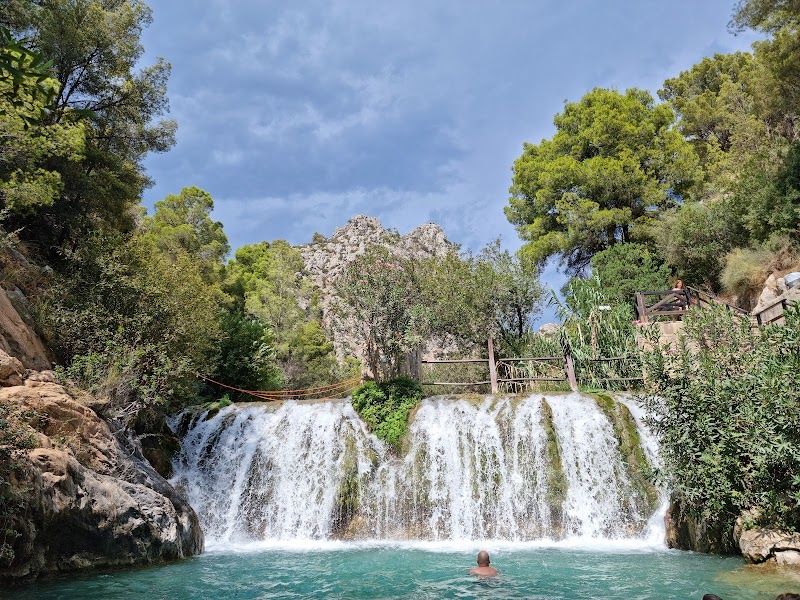
Entierro de la Sardina in Murcia: A Festival of Fire, Folklore, and Renewal
Entierro de la Sardina in Murcia is a fiery celebration blending centuries-old traditions with vibrant street life. Experience this dramatic festival that marks Carnival’s close, immersing yourself in the dance, fire, and folklore that bring Murcia to life each March.
Arrive Early to Secure a Good Viewing Spot
The procession moves through narrow streets that fill up quickly. Arriving 1-2 hours before the main event ensures a clear view and better photo opportunities.
Wear Comfortable, Sturdy Shoes
Cobblestone streets and standing for long periods require durable, supportive footwear to avoid injury and fatigue.
Bring a Water Bottle and Stay Hydrated
Though March evenings are mild, energetic crowds and dancing demand hydration. Water stations are limited along the route.
Mind the Crowds and Keep Your Belongings Secure
The festival is well-attended and vibrant. Stay aware of your surroundings to avoid pickpocketing, especially around packed squares.
Entierro de la Sardina in Murcia: A Festival of Fire, Folklore, and Renewal
Each spring in Murcia, Spain, the Entierro de la Sardina wakes the city with a daring blend of tradition and spectacle. This isn’t a quiet ceremony but a lively procession that channels centuries of history into a fiery celebration marking the end of Carnival and the start of Lent. The event’s heart is the burial of a symbolic sardine effigy, rich in satirical spirit and cultural meaning, where fire itself plays a starring role. Imagine walking through streets alive with flamenco rhythms, swirling costumes, and crowds eager to both honor and mock the past. The sardine—a figure of humor and renewal—is paraded through the city before being set ablaze, its smoke daring spectators to let go of winter’s old stories and welcome a fresh cycle.
Planning your visit means more than just arriving on time; it requires understanding the festival’s unfolding rhythm. The procession begins after dusk, typically in mid-March, stretching across Murcia’s old quarters. The route threads past the Segura River, which seems to nudge the parade forward, carrying the flames' energy through the city’s veins. Expect the streets to be crowded but electric, alive with community participation and spontaneous street performances. To fully take in the experience, consider where you stand—near the riverbanks for dramatic views or closer to the historic Plaza de las Flores for the densest crowd energy.
While Entierro de la Sardina is deeply cultural, the practical side cannot be ignored. Footpaths are cobbled and uneven, so sturdy, comfortable footwear is essential. Hydration is key, especially after the high-energy dancing and open-air exposure. Carry water and a compact rainproof layer; Murcia’s March weather swings between crisp evenings and mild days.
Beyond the night’s spectacle, the surrounding city offers an excellent base for exploration, with architecture and tapas bars waiting to extend your adventure post-festival. The Entierro de la Sardina challenges visitors to engage with Murcia’s fiercely vibrant traditions—festivities that are about letting go and stepping forward amid flames and laughter. For anyone ready to meet a cultural fire that refuses to dim, this celebration is a rare invitation to stand inside history’s glow.
Nearby Trips
All Adventures
Boat Charters
Water Activities
Adventures near Murcia, Spain
Discover the unique and memorable adventures that make Murcia, Spain special.
Frequently Asked Questions
What is the historical significance of the Entierro de la Sardina?
The festival dates back to the 19th century and symbolizes the burial of the Carnival excesses, marking the start of Lent. Historically, the sardine represents the last indulgence of meat before the fasting season begins, combining humor, satire, and community tradition.
Where does the sardine procession start and end?
The procession generally begins near the city center of Murcia, winds through streets alongside the Segura River, and culminates with the burning of the sardine effigy at the Riverbank Lent area, near a park called Paseo del Malecón.
Is the event family-friendly?
Yes, the festival attracts families and visitors of all ages, but the crowds and fire displays mean that parents should keep young children close and exercise caution.
Are there local food specialties tied to the festival?
While not directly linked to the festival, Murcia offers traditional dishes such as zarangollo and pastel de carne that visitors often enjoy nearby. Food stalls during the festival serve quick, local tapas to keep energy up.
What environmental efforts are in place during the festival?
In recent years, Murcia has increased waste management and recycling efforts during Entierro de la Sardina to reduce impact on the river and city streets, along with encouraging public transport use to limit traffic congestion.
Are there alternative vantage points less crowded than the main squares?
Yes, nearby parks such as Jardines del Malecón or bridges over the Segura River provide elevated views with fewer people, ideal for photography and a quieter experience.
Recommended Gear
Comfortable walking shoes
Supports standing and walking on cobbles and uneven surfaces during the festival.
Reusable water bottle
Staying hydrated in a lively, crowded outdoor environment is crucial.
Light waterproof jacket
March can bring sudden light showers; a compact rainproof layer helps you stay dry.
Small crossbody bag or money belt
Keeps valuables secure and hands free in crowded spaces.
Local Insights
Hidden Gems
- "The viewpoint at Puente Viejo (Old Bridge) offers striking angles of the procession against Murcia’s illuminated skyline."
- "Explore nearby Paseo del Malecón post-event for a quieter stroll along the riverbanks."
Wildlife
- "Sounds of night birds such as European robins and nightingales accompany the procession through the greener areas."
- "Riverbank vegetation hosts seasonal butterflies and frogs, active in spring."
History
"Entierro de la Sardina traces its roots to 19th-century Murcia and reflects Spain's Christian traditions intertwined with local humor and social critique, evolving into a symbol of letting go and renewal."
